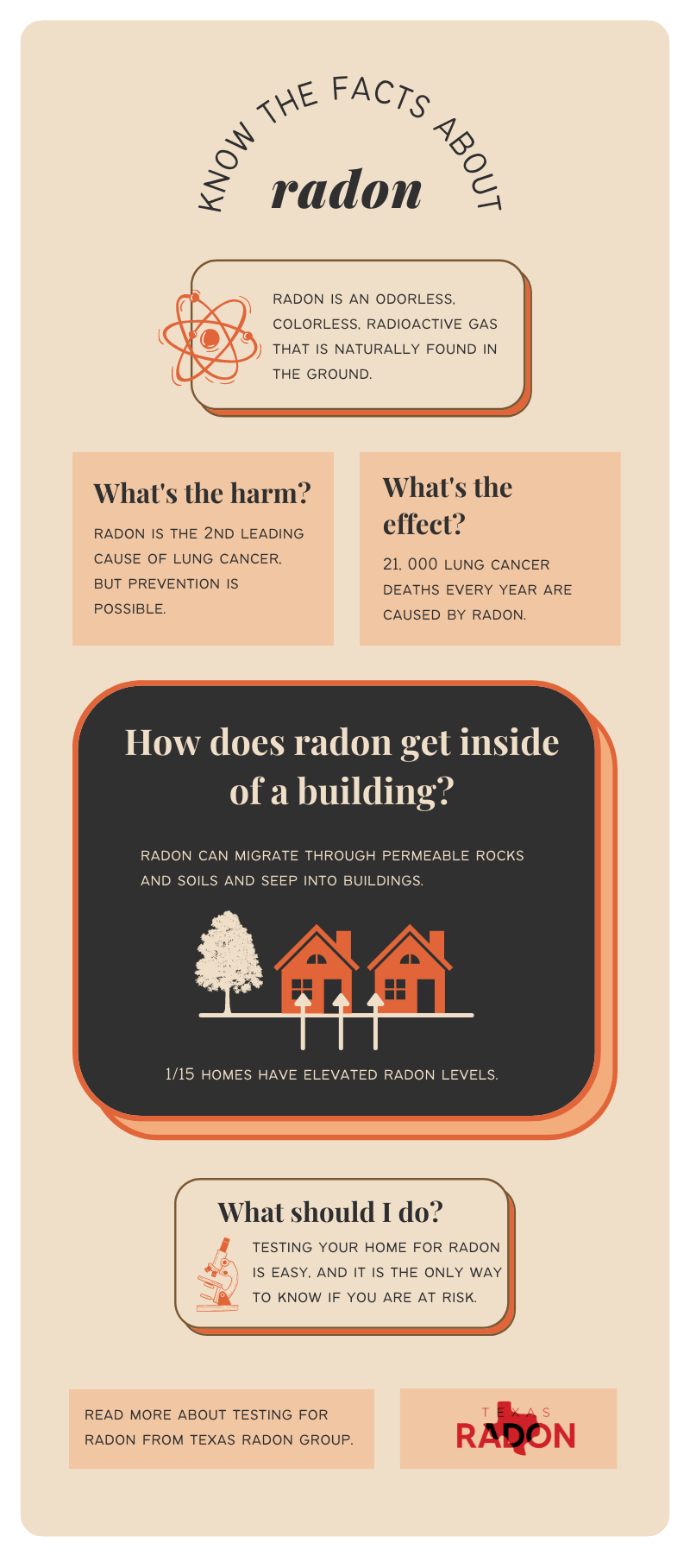Texas Radon Information
What is Radon?
Radon is an odorless, colorless, radioactive gas that develops with the natural breakdown of uranium in soil and rock. Radon can enter a home by migrating through permeable rocks and soils and eventually seeping into buildings or releasing into the atmosphere. Radon is measured in units of picocuries per liter (pCi/L) in either air or water.
What are the Health Risks Associated with Radon?
The primary health risk associated with radon is the potential to develop lung cancer. In addition, smoking combined with radon exposure greatly increases the risk for developing lung cancer. Read more about radon levels and concerns in Texas to understand potential risk.
Radon Public Service Announcement with Chester Pitts (00:48)
How Are You Exposed To Radon?
Radon that seeps into homes may accumulate there and decay into radioactive, chemically reactive particles that attach themselves to dust in the home environment. If inhaled over a long period of time, these radioactive particles may cause damage to the lung tissues and increase the risk of developing lung cancer.
Testing Recommendations
The only way to know your radon level is by testing your home or work environment for radon. If you have an elevated radon measurement, it may be wise to retest or seek action for radon reduction.
There are no radon certification requirements for the State of Texas at this time, but the National Radon Proficiency Program lists radon testers and mitigators within Texas that have passed a rigorous national certification program. A list of these individuals can be found at NRPP. Local home inspectors in your area may also perform radon testing.
Radon
-
Address
911 Boston Ave | Box 41023 | Lubbock, TX 79409-1023 -
Phone
806.834.0370 -
Email
kayleigh.millerick@ttu.edu


